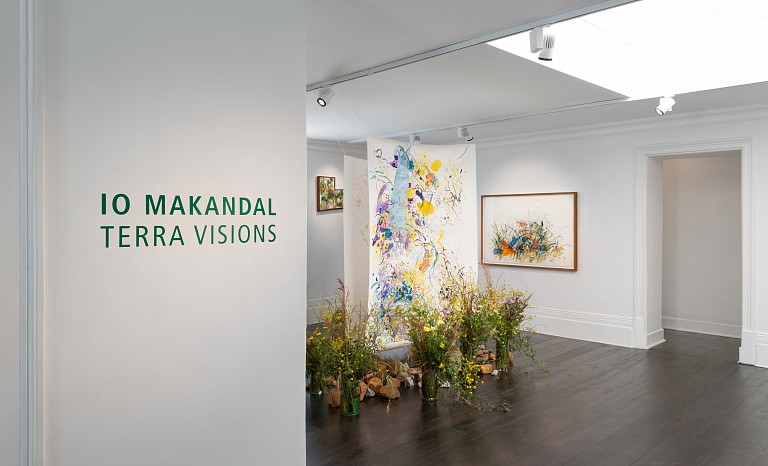
REVIEW: WHAT GROWS - TERRA VISIONS BY IO MAKANDAL
November 5, 2020 - KEELY SHINNERS | ARTTHROB
A couple of years ago, I was working as an assistant at a gallery. We were hosting a group show in which one of the works was to be a giant bird’s nest, sewn together out of hay from the artist’s farm, complete with several dozen handmade ceramic eggs. When the crated artwork arrived,we were somewhat irritated by its contents. The nest was dirty. It shed clumps of straw each time it was touched and left streaks of dirt on the floor and our clothes. Worst of all, though, were the bugs: muggies buzzing in our ears, fleas chowing our legs. After three days, our director had had enough. The nest was to be sent back, the eggs placed on a plinth like any normal sculpture.
It was then I learned two important lessons about the commercial art world. 1) The gallery is no fit place for getting one’s hands dirty, and 2) the gallery is no fit place for living things.
It was this memory which popped into my head upon visiting Io Makandal’s ‘Terra Visions’ at Everard Read. Probably because of the bugs. Not fleas – thank goodness – but a few beetles, little mites, a hairy white moth. The smell too – dry, fungal smell of rot – so out of place that to behold it was to be reminded what sterile, sense-obliterating places galleries can be. How ironically refreshing it was to have the floors blanketed in wilted flowers, dry grass, rotting leaves.
Makandal takes this idea – decay as the site of activation – as her thesis for ‘Terra Visions’. In other words, it is a show about compost. A welcome impetus, I thought, as someone who is starting to consider seriously what art might look like at the end of the world. Why not turn the gallery into a compost site? Like Walter de Maria’s Earth Room, but healthier. Why not locate the archive in organic matter? As Kapwani Kiwangi did in Flowers for Africa. How cool would it be to create a compostable artwork: an artwork that grew, died, rotted, was reborn anew.
Certainly, ‘Terra Visions’ makes the gallery more earthy than usual. But, as my gardener friend pointed out, compost is supposed to be hot, wet, vital. These installations, perhaps green at opening, were by now dried out, brittle; they crumple to the touch. No life will flourish here beyond microbes which eat away at the dead. Where is the alchemy? I wondered. The fertility? If decay is tangential to regeneration, what will be generated other than a backdrop for what’s framed?
The gallery is no fit place for living things, I suppose.
Maybe, I thought, I’m being unforgiving by interpreting the “call to action to mitigate the deadening of ground” too literally. Maybe compost is just a metaphor. The real alchemy happens when the artist integrates earthbound knowledge systems onto the page. Makandal’s gestures – scribbles, splices, smudges, overlaps, improvisations, and entanglements – gesture towards the terrestrial theatres enacting themselves, impervious to the naked eye. Still, there’s something a bit too clean about them. For instance, how the ‘Terra Vision’ pieces are cut and rearranged versions of their original drawings – imitating the sedimentary, I assume – but cut and rearranged so neatly, eliminating the element of surprise. Or the Humus pieces, which incorporate bits of brown matter – so important for compost, as they feed the microbes which turn kitchen waste into soil – these too seem too careful, too pretty, too clean, bracketed by frames custom-made to round off the rough edges. Just as a pair of mangey carpets and a few plastic tarps are keeping the installations’ dust from spreading all over the gallery, these abstract drawings portray a rather palatable mess.
(Meanwhile, gardeners are shoveling compost onto the lawn outside, upon which only grass-as-backdrop for the gallery’s new sculpture garden will grow.)
The gallery is no fit place for getting one’s hands dirty, I suppose.
Makandal is definitely onto something. As we enter into an era of ongoing ecological catastrophe, it’s essential to fabulate strategies of both art-making and being-in-the-world which adhere more gently to earth logic, earth time, earth moods. For this particular experiment, I’m left wanting less allusion, more of what grows.
Back to News





